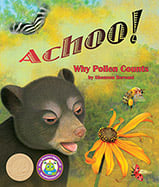Alignment to Standards for TX

| Grade | Number | Standard |
|---|---|---|
| 1 | 112.12 (b) (10) (B) | identify and compare the parts of plants |
| 1 | 112.12 (b) (9) | the living environment is composed of relationships between organisms and the life cycles that occur. |
| 1 | 112.12 (b) (9) (C) | interdependence among living organisms such as energy transfer through food chains and animals using plants for shelter. |
| 2 | 112.13. (b) (10) (B) | observe, record, and compare how the physical characteristics of plants help them meet their basic needs such as stems carry water throughout the plant |
| 2 | 112.13. (b) (9) | living organisms have basic needs that must be met for them to survive within their environment. |
| 2 | 112.13. (b) (9) (A) | identify the basic needs of plants and animals |
| 2 | 112.13. (b) (9) (C) | ways living organisms depend on each other and on their environments such as food chains |
| 3 | 112.14. (b) (10) | organisms undergo similar life processes and have structures that help them survive within their environments. |
| 3 | 112.14. (b) (10) (C) | how animals and plants undergo a series of orderly changes in their diverse life cycles such as tomato plants, frogs, and lady bugs. |
| 3 | 112.14. (b) (9) | organisms have characteristics that help them survive and can describe patterns, cycles, systems, and relationships within the environments. |
| 4 | 112.15. (b) (10) | organisms undergo similar life processes and have structures that help them survive within their environment. |
| 4 | 112.15. (b) (10) (C) | explore, illustrate, and compare life cycles in living organisms such as butterflies, beetles, radishes, or lima beans. |
| 5 | 112.16. (b) (10) | organisms undergo similar life processes and have structures that help them survive within their environments. |
| 5 | 112.16. (b) (9) | there are relationships, systems, and cycles within environments. |
| K | 112.11 (b) (10) (B) | identify parts of plants such as roots, stem, and leaves and parts of animals such as head, eyes, and limbs |
| K | 112.11 (b) (10) (C) | identify ways that young plants resemble the parent plant |
| K | 112.11 (b) (10) (D) | observe changes that are part of a simple life cycle of a plant: seed, seedling, plant, flower, and fruit. |
| K | 112.11 (b) (9) | plants and animals have basic needs and depend on the living and nonliving things around them for survival. |
| K | 112.11 (b) (9) (B) | examine evidence that living organisms have basic needs such as food, water, and shelter for animals and air, water, nutrients, sunlight, and space for plants. |
| PK | PK.2. (F) | begins to recognize that living things have similar needs for water, food, and air |